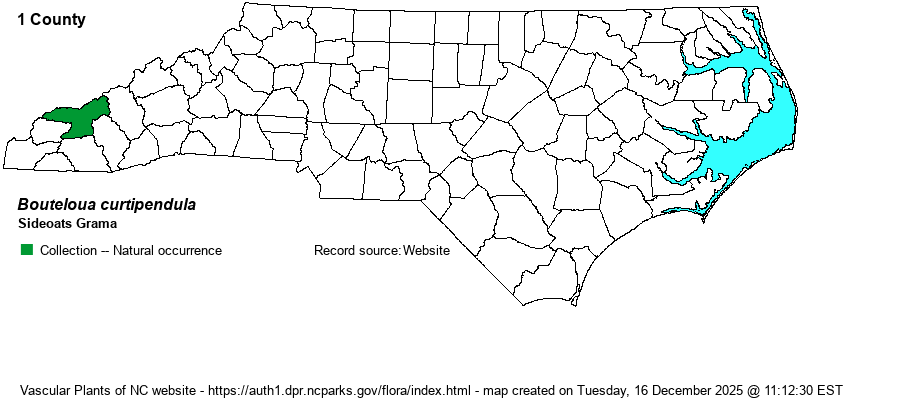| Author | (Michaux) Torrey | |
| Distribution | Southern Mountains only. Discovered for the first time in NC in Swain County in 2009 by David Campbell.
Southwestern CT to MT, south to northwestern GA, TX, and CA; disjunct in northwestern FL. | |
| Abundance | Very rare and not likely to be found in many more NC counties, as it has specialized habitats that are very rare in NC. This is a State Threatened species. | |
| Habitat | In the Midwest it is a species of chalk or limestone prairies. In NC, it occurs only at a very rich, rocky cove forest, underlain by marble (calcareous material). | |
| Phenology | Flowering and fruiting July-September. | |
| Identification | The leaves are mostly basal, about a foot long, and form a tuft. The flowering stems typically grow 1.5-2.5 feet tall. It is virtually unmistakable in its inflorescence: a vertical row of small spikelets, each of which is oriented 90 degrees from the stem (or slightly dangling down at an angle), and thus appearing like tiny semaphore flags. | |
| Taxonomic Comments | A second variety occurs in the southwestern U.S. and Mexico.
| |
| Other Common Name(s) | None | |
| State Rank | S1 | |
| Global Rank | G5 | |
| State Status | [T] | |
| US Status | | |
| USACE-agcp | | |
| USACE-emp | | |

